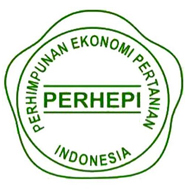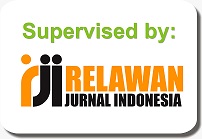VALUE CHAIN ANALYSIS ON KANGKONG SEED PRODUCTION in PT EAST WEST SEED INDONESIA (EWINDO)
Abstract
Keywords
Full Text:
PDF (Bahasa Indonesia)References
[ACIAR] Australian Centre for International Agricultural Research. 2008. Making Value Chains Work Better for The Poor: A Toolbook for Practitioners of Value Chain Analysis. Phnom Penh (KH): Agricultural Development Internatioal
Arce C. 2016. Comparative Assessment of Selected Agricultural Weather Index Insurance Strategies in Sub-Saharan Africa. Pretoria (ZA): Vuna Research Report
Bisnis Indonesia. 2017. “Hortikultura dan Perkebunan Jadi Fokus di 2018” (http://industri.bisnis.com/read/20170530/99/657927/hortikultura-dan-perkebunan-jadi-fokus-di-2018 diakses tanggal 02 Okt 2017)
Bobriková M. 2016. Weather Risk Management in Agriculture. Acta Univ. Agric. et Silvic. Mendel. Brun. 64(4): 1303–1309
Boer R. 2012. Asuransi Iklim sebagai Jaminan Perlindungan Ketahanan Petani terhadap Perubahan Iklim. Prosiding Widyakarya Nasional Pangan dan Gizi 10: Pemantapan Ketahanan Pangan dan perbaikan Gizi Berbasis Kemandirian dan Kearifan Lokal, 2012 Nov 20-21; LIPI, Jakarta
Estiningtyas W. 2012. Pengembangan Model Asuransi Indeks Iklim untuk Meningkatkan Ketahanan Petani Padi dalam Menghadapi Perubahan Iklim [Disertasi]. Bogor (ID). Institut Pertanian Bogor
Gereffi G, Humphrey J, Sturgeon T. 2005. The Governance of Global Value Chain. Revi. of Inter. Pol. Econ. 12 (1): 78-104
Gereffi G, Fernandez-Stark K. 2016. Global Value Chain Analysis: A Primer. 2nd Ed. North Carolina (US): Center on Globalization, Governance & Competitiveness - Duke Univ.
Hermina, Prihatini S. 2016. Gambaran Konsumsi Sayur dan Buah Penduduk Indonesia dalam Konteks Gizi Seimbang: Analisis Lanjut Survei Konsumsi Makanan Individu (SKMI) 2014. Bul. Penel. Kesehatan 44 (3): 205-218
[INFODATIN] Pusat Data dan Informasi Kementrian Kesehatan RI. 2016. Konsumsi Makanan Penduduk Indonesia. Jakarta (ID): Kementrian Kesehatan Republik Indonesia
Insyafiah, Wardhani I. 2014. Kajian Persiapan Implementasi Asuransi Pertanian Secara Nasional. Jakarta (ID): Pusat Pengelolaan Risiko Fiskal,Badan Kebijakan Fiskal - Kementerian Keuangan
Kaplinsky R, Morris M. 2001. A Handbook for Value Chain Research. Ottawa (CA): International Development Research Center
Katungi E, Karanja D, Wozemba D, Mutuoki T and Rubyogo J C. 2011. A Cost-Benefit Analysis of Farmer Based Seed Production for Common Bean in Kenya. Afric. Crop Science Jour. 19(4): 409 – 415
Latifah E, Boga K dan Maryono J. 2014. Pengenalan Model Kebun Sayur Sekolah untuk Peningkatan Konsumsi Sayuran bagi Para Siswa di Kediri - Jawa Timur. Agriekonomika 3 (1): 34-44
Mulugeta F, Eshetu J, Nikus O. 2010. Seed Value Chain Analysis as a means for Sustainable Seed System: A case of farmers based seed production and marketing in Arsi Zone, Oromia Region. Asella (ET): FAO - Crop Diversification and Marketing Development Project
Osgood DE, McLaurin M, Carriquiry M, Mishra A., Fiondella F, Hansen J, Peterson N and Ward N. 2007. Designing Weather Insurance Contracts for Farmers in Malawi, Tanzania, and Kenya, Final Report to the Commodity Risk Management Group, ARD, World Bank. New York (US): International Research Institute for Climate and Society (IRI) - Columbia University
Perez R P, Oddone N. 2016. Strengthening Value Chains: A Toolkit. Mexico City (MX): Economic Commission for Latin America and the Caribbean (ECLAC) – United Nation
Porter M E. 1993. Competitive Advantage. London (GB): Collier Macmillan Publishers
DOI: https://doi.org/10.32528/agribest.v3i1.1942
Refbacks
- There are currently no refbacks.
Copyright (c) 2019 Jurnal Agribest

This work is licensed under a Creative Commons Attribution 4.0 International License.
INDEXING SERVICES













